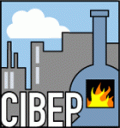 Do you want to obtain no-cost, technical services and incentives for your boiler systems, while decreasing your energy costs? Enovity, a sustainability consulting firm, provides cash incentives for boiler efficiency improvements to commercial, industrial and agricultural customers in PG&E's service territory who pay the Public Good Charge or Public Purpose Surcharge and operate hot water or steam boilers.
Do you want to obtain no-cost, technical services and incentives for your boiler systems, while decreasing your energy costs? Enovity, a sustainability consulting firm, provides cash incentives for boiler efficiency improvements to commercial, industrial and agricultural customers in PG&E's service territory who pay the Public Good Charge or Public Purpose Surcharge and operate hot water or steam boilers.
Through Envoity's Commercial Industrial Boiler Efficiency Program, facilities were able to save over $2.8 million in annual energy costs and receive $2.9 million in cash incentives during the 2006-2008 Program cycle. As a result of Enovity's success, the Program will continue through the next funding period.
Enovity helps its customers identify boiler system energy efficiency opportunities at their facility, perform measurements and analysis to estimate energy savings, assist in the implementation of the energy efficiency upgrades (such as reviewing contractor proposals), verify the installation of measures and the final savings achieved, and provides a financial incentive to help buy down the cost of these projects. Enovotiy has also been instrumental in combining boiler energy efficiency with NOx upgrades in order to improved boiler capacity, improve operations and maintenance and reduce greenhouse gas emissions.
Examples of these measures include burner control upgrades (for 30 ppm NOx), burner combustion fan VFDs, and SCR installation and ULN burner replacement (such as replacing a high excess air, ULN burner with a low excess air 30 ppm NOx burner with a CataStak SCR system).
Benefits of participating in the Program include reduced energy consumption, reduced greenhouse gas emissions, reduced maintenance costs and improved system efficiency What do you have to lose?
Also, read Nationwide Boiler's case study about how a major California food processor was able to receive cash incentives as well as energy and emissions reductions though the installation of a an E2Stak solution (CataStak SCR system and EconoStak economizer) and a condensing stack heat recovery system.
Boiler Blog | Nationwide Boiler Inc.
Nationwide has always taken a proactive approach towards renting equipment to tomato processors located in California's Central Valley. To keep the industry running, it is vital that Nationwide stock an adequate amount of trailer-mounted boilers in anticipation of an abundant harvest, on top of equipment already rented out to customers in other industries. It is also important that Nationwide continually stay in contact with tomato processors well in advance of the start of the season to ensure equipment is available and operating prior to tomato delivery.
One prominent processor located near Modesto, CA recently rented a 70,000 lb/hr trailer-mounted boiler with a CataStakâ„¢ SCR system and an EconoStak economizer. As in previous years, the equipment was delivered as the company was preparing to ramp up production prior to the first tomato-laden trucks rolling in. The addition of the CataStak and EconoStak improved boiler efficiency and the boiler easily met the 5 ppm NOx emission requirement required by the local air district. Not only is Nationwide providing an immediate supply of steam, but the company is also providing an environmentally green solution.
The next time you enjoy ketchup with your fries or when you add an extra scoop of sauce to go with your spaghetti, remember that Nationwide Boiler was involved in making sure those tomatoes made it to your plate, and we expect to continue to do the same - time and time again.
Nationwide Boiler's sales team will be exhibiting at booth 2578 at the 22nd annual Power-Gen international trade show, December 14-16 at the Orange County Convention Center, Orlando, FL.
To receive a complimentary exhibit floor pass, please contact Nationwide Boiler at info@nationwideboiler.com.

Have you been considering steam system improvements in your plant, but do not know where to begin? Do you want to potentially save 10% or more in fuel costs, while reducing emissions?
The U.S. Department of Energy's (DOE) Industrial Technologies Program can help answer those questions for you and has developed the Steam System Scoping Tool (SSST) for energy coordinators, facility managers and plant electricians to help evaluate your steam system's performance. The software (available in MS Excel or Visual Basic formats) asks 26 questions about different areas of your steam system including system profiling, steam system operating practices, boiler plant operating practices, and distribution and recovery operation practices. Based on your responses, the software will indicate opportunities for improvements and will suggest a range of ways to save steam energy and boost productivity. It also compares your system against similar facilities in your industry and identifies best practices.
According to the DOE, six DOE Industrial Assessment Centers used the SSST in 2001 to assess steam systems at 18 small and medium-sized facilities. Overall, the software identified 89 system improvements with an average fuel savings of 12.5%. Collectively, the total improvements yielded a total annual savings of $2.8 million.
To learn more about this free software, visit the DOE's website.
Call Nationwide Boiler at 800-277-1966 to let us know how much energy you are able to save. We can also provide you with valuable information about our energy efficient equipment for sale or for rent, including EconoStak economizers, Best Performance Standards (BPS) boilers and CataStak SCR systems for boilers and gas-fired turbines.


